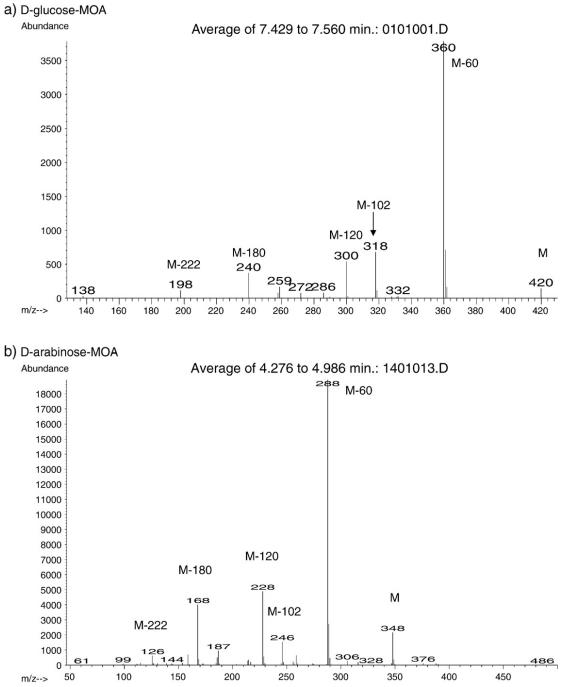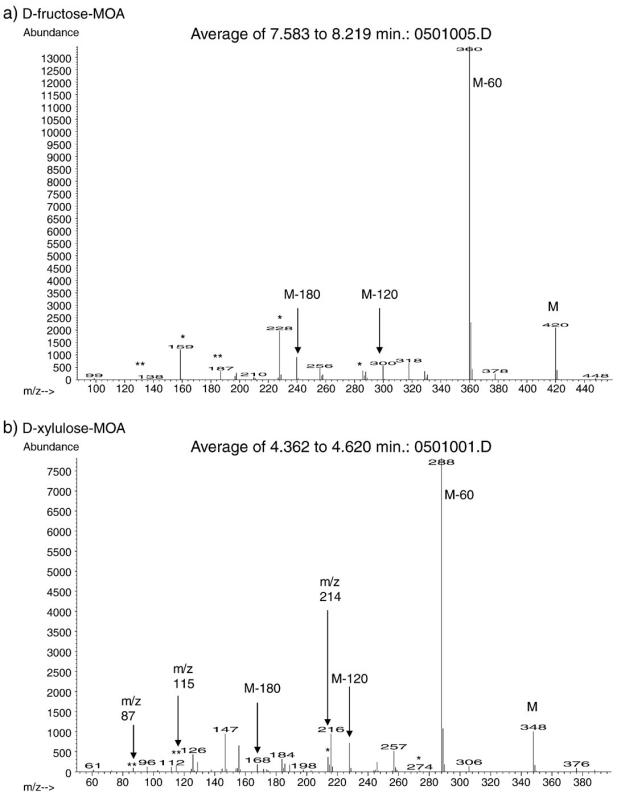- Service Details
- Case Study
- Description
Glucose, the primary energy source for most cells in the body, plays an imperative role in a wide spectrum of biological mechanisms. It is critical in various bioanalytical studies, medical diagnostics, environmental analysis, and food and beverage industry. The precise analysis of glucose, is paramount to gain a clear understanding of these multitudes of processes and systems.
In the narrative of glucose analysis, Creative Proteomics offers a profound folio of services to meet the ever-evolving needs of both academic and industrial research. We strive to provide reliable, comprehensive, and tailor-made solutions to accelerate your glucose-related research.
Glucose Analysis Services in Creative Proteomics
Glucose Identification:
- Accurate identification of glucose molecules in various biological samples.
- Utilization of chromatographic and spectroscopic techniques for precise identification.
Glucose Concentration Measurement:
- Quantitative determination of glucose concentrations in biological fluids and tissues.
- High-precision measurement using enzymatic assays, HPLC, and mass spectrometry.
Glucose Metabolism Analysis:
- Investigation of glucose metabolism pathways in cells, tissues, and organisms.
- Profiling of intermediates and end products of glucose metabolism using metabolomics approaches.
Glucose Kinetics Studies:
- Assessment of glucose uptake, utilization, and clearance kinetics in biological systems.
- Measurement of flux through glycolysis, gluconeogenesis, and other metabolic pathways using stable isotopes and kinetic modeling.
Technical Platforms for Glucose Analysis
High-Performance Liquid Chromatography (HPLC): Advanced HPLC systems with high-resolution columns and sensitive detectors, optimized for accurate quantification of glucose concentrations using reverse-phase chromatography and UV-visible detection.
Mass Spectrometry (MS): Cutting-edge mass spectrometers for sensitive detection and quantification of glucose and its metabolites, with liquid chromatography-mass spectrometry (LC-MS) capabilities and selected ion monitoring (SIM) for targeted analysis.
Enzymatic Assays: Utilization of glucose oxidase and hexokinase enzymes for enzymatic assays, enabling precise measurement of glucose concentrations with spectrophotometric detection.
Stable Isotope Tracers: Incorporation of stable isotopes for studying glucose kinetics and metabolism, with mass spectrometry-based detection of labeled isotopologues for quantifying glucose flux rates.
Data Analysis and Interpretation: Specialized software for data processing, peak integration, and statistical analysis, along with integration of multi-omics data to elucidate glucose metabolism networks.
Sample Requirements for Glucose Analysis
| Sample Type | Suggested Sample Volume |
|---|---|
| Plasma | 100 µL |
| Serum | 100 µL |
| Urine | 200 µL |
| Cerebrospinal fluid (CSF) | 20 µL |
| Saliva | 200 µL |
| Food sample | Varies (at least 1g or 1mL) |
Deliverables
- Analytical Reports: Comprehensive reports summarizing quantitative measurements, chromatographic profiles, and interpretation of results.
- Quantitative Data: Accurate quantification of glucose concentrations in provided samples, presented in tabular format with associated units and error margins.
- Chromatograms: Visualization of chromatographic separation and detection of glucose peaks in the sample matrix.
- Quality Control Data: Records of quality control measurements demonstrating the performance and consistency of the analytical process.
- Customized Analysis: Tailored reports and interpretation based on specific research objectives or experimental requirements.
- Consultation and Interpretation: Expert consultation and interpretation of results to guide further experimentation and decision-making.
Applications of Glucose Analysis
Basic Research: Fundamental investigations into cellular metabolism, energy production, and signaling pathways.
Pharmaceutical Research: Testing efficacy of new drugs, especially those targeting glucose metabolism, such as antidiabetic agents.
Food and Beverages Industry: In verifying sugar content and quality control.
Biomedical Engineering: Particularly in designing glucose-responsive insulin delivery systems.
Title: Quantitative Analysis of Serum Glucose and Fructose Using GC/MS with Methoxime Per-Acetate Derivatization
Background
The study addresses the increasing concern over the health implications of high fructose consumption, particularly its link to conditions like obesity and diabetes. Traditional enzymatic assays for glucose and fructose in serum samples have limitations, especially in the presence of high glucose concentrations. Thus, there is a need for a sensitive and precise analytical method to quantify serum glucose and fructose levels simultaneously.
Samples
The study utilized clinical serum samples obtained from patients undergoing evaluation for diabetes control. These samples were collected with institutional review board approval and processed to isolate the plasma for analysis.
Technical Methods
The study employed methoxime per-acetate (MOA) derivatization to convert aldoses and ketoses in serum samples into more volatile derivatives suitable for gas chromatography/mass spectrometry (GC/MS) analysis. This method involves several steps:
1. Precipitation of proteins in the serum samples using barium hydroxide and zinc sulfate.
2. Derivatization of the resulting supernatant with methoxylamine hydrochloride and acetic anhydride to form MOA derivatives.
3. Analysis of the MOA derivatives using GC/MS, with selective ion monitoring for quantification.
4. Comparison of the developed method with commercially available enzymatic assays for validation.
Results
The study successfully developed a quantitative analysis method for serum glucose and fructose using GC/MS with MOA derivatization. Key findings include:
1. Identification of unique fragmentation patterns for aldose-MOA and ketose-MOA under both electron ionization (EI) and chemical ionization (CI) conditions.
2. Comparison of the developed method with enzymatic assays revealed superior sensitivity and precision, particularly for detecting lower serum fructose concentrations.
3. Analysis of clinical serum samples showed fructose levels in the micromolar range and glucose levels in the millimolar range.
4. The method demonstrated its utility in studying fructose metabolism, particularly in diabetic populations, where accurate measurement of serum fructose levels is crucial.
 Representative mass spectra (CI Mode) of aldoses-MOA
Representative mass spectra (CI Mode) of aldoses-MOA
 Representative of CI mass spectra of ketoses-MOA : (a) D-fructose-MOA and (b) D-xylulose-MOA.
Representative of CI mass spectra of ketoses-MOA : (a) D-fructose-MOA and (b) D-xylulose-MOA.
Reference
- Wahjudi, Paulin N., et al. "Measurement of glucose and fructose in clinical samples using gas chromatography/mass spectrometry." Clinical biochemistry 43.1-2 (2010): 198-207.
What is Glucose?
Glucose, a ubiquitous sugar molecule with the chemical formula C6H12O6, plays a central role in biological systems as a primary source of energy. As a monosaccharide, glucose is the simplest form of carbohydrate, consisting of six carbon atoms arranged in a ring structure, along with hydrogen and oxygen atoms. Its molecular structure enables rapid metabolism and utilization within cells, making it indispensable for sustaining life.
In biological organisms, glucose serves as a vital fuel for cellular respiration, a series of metabolic pathways that generate adenosine triphosphate (ATP), the universal energy currency of cells. Through oxidative phosphorylation and glycolysis, glucose undergoes sequential enzymatic reactions to produce ATP, providing the energy necessary for cellular functions, including growth, movement, and maintenance of homeostasis.
Moreover, glucose metabolism extends beyond energy production, influencing various physiological processes such as gene expression, signal transduction, and biosynthesis of biomolecules. The intricate regulation of glucose levels in the bloodstream, primarily controlled by hormones such as insulin, ensures a constant supply of energy to tissues while preventing hyperglycemia or hypoglycemia.
In addition to its role as an energy source, glucose serves as a precursor for synthesizing complex carbohydrates, lipids, and amino acids essential for cell structure and function. Furthermore, glucose participates in the formation of glycoproteins and glycolipids, crucial components of cell membranes and signaling molecules.
Beyond its physiological significance, glucose analysis holds immense importance in biomedical research and clinical diagnostics. Accurate quantification of glucose levels in biological samples enables researchers to elucidate metabolic pathways, investigate disease mechanisms, and develop targeted therapies for metabolic disorders such as diabetes mellitus.
What Does Glucose Do in The Body?
Energy Production: Glucose is the primary energy substrate for cells throughout the body, particularly in tissues with high metabolic demands such as the brain, muscles, and liver. Through a series of biochemical reactions known as cellular respiration, glucose is oxidized to produce adenosine triphosphate (ATP), the universal energy currency of cells.
Brain Function: The brain relies heavily on glucose as its main energy source. Glucose is transported across the blood-brain barrier and metabolized to sustain neuronal activities, including neurotransmitter synthesis, synaptic transmission, and information processing.
Muscle Contraction: Skeletal muscles utilize glucose as a fuel source during physical activity. Glucose is metabolized through glycolysis to generate ATP, which powers muscle contraction and movement. Additionally, stored glucose in the form of glycogen serves as a readily available energy reserve in muscles.
Maintenance of Blood Sugar Levels: Glucose homeostasis is tightly regulated to ensure stable blood sugar levels. After a meal, dietary carbohydrates are broken down into glucose, which is absorbed into the bloodstream. Insulin, a hormone secreted by the pancreas, facilitates the uptake of glucose by cells for energy production or storage. Conversely, during fasting or periods of increased energy demand, stored glucose in the form of glycogen is mobilized from the liver to maintain blood glucose levels.
Metabolic Regulation: Glucose metabolism plays a pivotal role in regulating metabolic pathways such as glycolysis, gluconeogenesis, and glycogen synthesis. These processes are finely tuned to meet the energy needs of cells under various physiological conditions and metabolic demands.
Cellular Signaling: Glucose metabolism also contributes to cellular signaling pathways involved in gene expression, cell proliferation, and differentiation. Intermediate metabolites of glucose, such as pyruvate and acetyl-CoA, serve as substrates for biosynthetic pathways and signaling molecules that regulate cellular functions.
Fat Storage: Excess glucose that is not immediately utilized for energy is converted into fatty acids and stored as triglycerides in adipose tissue. This process, known as lipogenesis, contributes to the long-term storage of energy reserves in the body.




